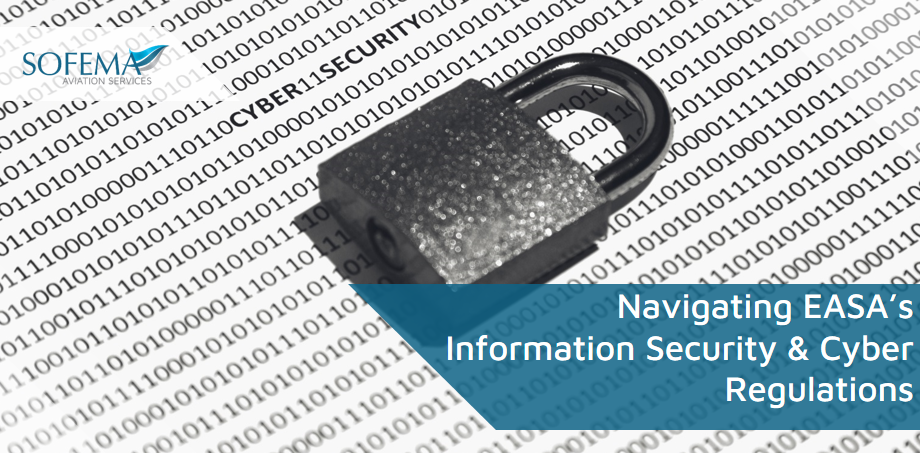Sofema Aviation Services (SAS) considers key aspects related to single point and single service provider
Introduction
As organizations increasingly adopt Microsoft’s ecosystem—relying on solutions like Microsoft 365, Azure, and Defender for Endpoint, there’s a growing concern about the risks associated with depending too heavily on a single provider. From a regulatory standpoint, EASA’s Information Security and Cyber Regulations emphasize risk management, resilience, and reducing supplier dependency.
Over-reliance on a single vendor can introduce several key challenges:
- Vendor Lock-in – A lack of flexibility when it comes to pricing, customization, and the ability to switch providers can make future transitions difficult.
- Single Point of Failure – If Microsoft experiences outages (e.g., Azure disruptions), critical operations could be affected, posing operational and regulatory risks.
- Compliance Considerations – Organizations must ensure that Microsoft’s data security and encryption policies align with EASA’s NIS2 Directive, which requires robust cybersecurity measures.
- Data Sovereignty & Access Control – Regulatory frameworks often mandate that organizations maintain full control over data access and storage locations. This can be a challenge when fully reliant on a single cloud provider.
To mitigate these risks, IT managers should conduct regular risk assessments to ensure that Microsoft’s security frameworks align with EASA’s cyber resilience requirements. Establishing a business continuity plan—including response strategies for potential Microsoft service disruptions—is essential.
Leveraging a Hybrid Approach: Microsoft & AWS for Redundancy
A multi-cloud strategy that combines Microsoft and AWS can enhance both resilience and compliance with EASA’s cybersecurity mandates. By diversifying infrastructure, organizations can improve redundancy, security, and operational flexibility. Practical applications of this approach include:
- Multi-Cloud Backup & Disaster Recovery – Using AWS S3 for backup alongside Microsoft Azure ensures business continuity in case of service failures.
- Hybrid Security Framework – Configuring AWS Security Hub alongside Microsoft Defender helps diversify threat detection and response capabilities.
- Workload Distribution – Running primary applications on Azure while utilizing AWS Lambda or EC2 instances for failover enhances overall system resilience.
- Data Localization & Compliance – AWS may offer specific data residency solutions that complement Microsoft’s environment while helping to meet EASA’s stringent regulatory requirements.
Mitigations for Risks Associated with Sole Dependence on Microsoft’s Ecosystem
To address the potential risks of relying exclusively on Microsoft’s ecosystem, organizations should implement a series of mitigations to enhance resilience, security, and regulatory compliance.
Multi-Cloud & Hybrid IT Strategy
- Adopt a multi-cloud approach by integrating AWS, Google Cloud, or another provider for redundancy.
- Use hybrid cloud solutions where sensitive or critical workloads can be split across on-premises infrastructure and multiple cloud providers.
- Implement cloud-agnostic architectures to reduce reliance on proprietary Microsoft tools and allow for seamless transition if needed.
Data Backup & Disaster Recovery (DR) Planning
- Implement cross-cloud backup solutions (e.g., AWS S3, Google Cloud Storage) in addition to Microsoft Azure Backup.
- Use a geo-redundant backup strategy to store critical data in multiple locations across different providers.
- Regularly test disaster recovery plans to ensure rapid failover in case of Microsoft service disruptions.
Cybersecurity & Risk Management Enhancements
- Diversify security tools by using AWS Security Hub, Google Chronicle, or independent cybersecurity solutions alongside Microsoft Defender.
- Adopt a zero-trust security model that enforces strict access controls independent of the cloud provider.
- Monitor cloud security compliance through continuous risk assessments and third-party cybersecurity audits.
Compliance & Regulatory Safeguards
- Ensure compliance with EASA NIS2 and other cybersecurity mandates by using tools that verify adherence across multiple providers.
- Implement data sovereignty measures to store sensitive data within jurisdictions that meet regulatory requirements.
- Use encryption and key management solutions that are provider-independent, ensuring access control remains within the organization.
Vendor Lock-In Avoidance & Strategic Flexibility
- Use open-source and cross-cloud compatible solutions where possible to reduce dependency on Microsoft’s proprietary tools.
- Establish migration contingency plans for business-critical applications in case a shift away from Microsoft is required.
- Leverage containerization and Kubernetes to maintain portability across different cloud providers.
Business Continuity Planning & Operational Resilience
- Establish a failover strategy where workloads can switch between Microsoft and other providers seamlessly.
- Deploy redundant identity and access management (IAM) solutions to avoid being locked into Azure Active Directory.
- Conduct regular IT risk assessments and penetration testing to identify vulnerabilities in cloud infrastructure.
Next Steps
- Follow this link to our Library to find & download related documents for Free.
- See the following 2-day course- Part 145 Cyber Security Implementation. For comments or questions, please email team@sassofia.com.
Tags:
SAS blogs, EASA’s Information Security, Cyber Regulations, Microsoft Ecosystem, single service provider, Vendor Lock-in, Compliance Considerations, Data Sovereignty, Access Control, Hybrid Approach, Multi-Cloud & Hybrid IT Strategy, Data Backup, Disaster Recovery (DR) Planning





